All products featured are independently chosen by us. However, SoundGuys may receive a commission on orders placed through its retail links. See our ethics statement.
Sony WH-1000XM5 vs Bose Noise Cancelling Headphones 700
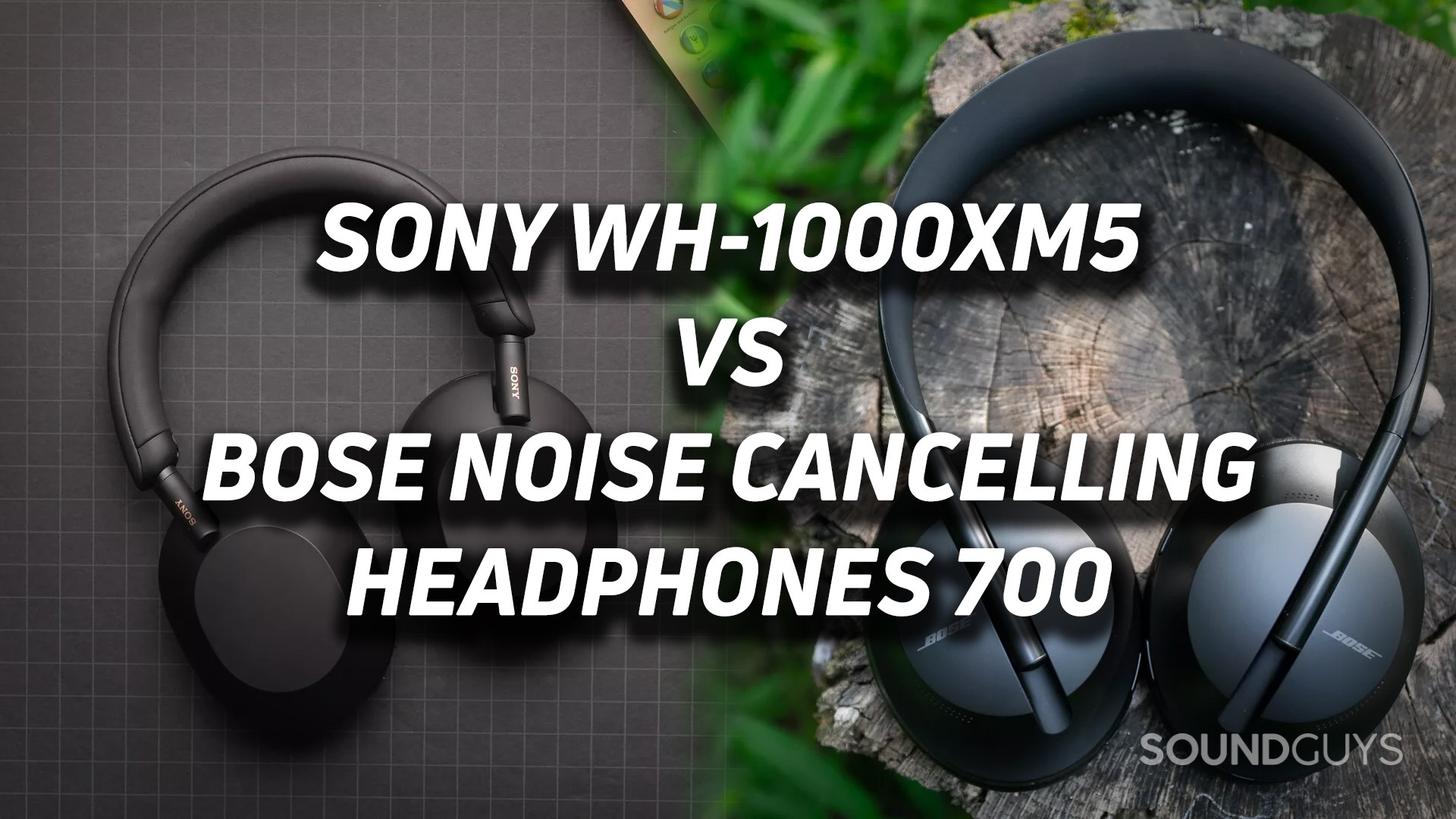
Sony and Bose are always duking it out for the title of best active noise canceling (ANC) headphones. The Sony WH-1000XM5 comes out swinging with many enhancements over the popular Bose Noise Cancelling Headphones 700. Both companies boast some of the best ANC tech on the market, but which model takes the throne today?
Editor’s note: this Sony WH-1000XM5 vs Bose Noise Cancelling Headphones 700 comparison was updated on June 20, 2023, to answer a FAQ and to update formatting.
Sony WH-1000XM5 vs Bose Noise Cancelling Headphones 700: Which headphones have a better design?
A new model means an updated design, and the Sony WH-1000XM5 has refined some aspects of its predecessor, the Sony WH-1000XM4. Like the Noise Canceling Headphones 700, the Sony ear cups are on a friction band. Rather than extending the headband down a series of notches, you put either headset on and adjust until everything feels right. Sony’s cans weigh around 250g and Bose’s headset comes in at 254g, so they’re roughly equal in that regard, too.
The Bose Noise Cancelling Headphones 700 still looks sleek and modern, even a few years after its release, thanks to its sliding ear cups and elegantly tapered band. When it comes to functionality, both the WH-1000XM5 and NCH 700 ear cups swivel to lay flat, and neither headset has hinges to fold the ear cups toward the headband.
The padding on the Sony WH-1000XM5 has been improved compared to the WH-1000XM4. That means excellent isolation and an overall improved listening experience in terms of comfort. The Bose headphones will still be plenty cozy for most people, though. Both models have thin headbands, and this could be a help or hindrance depending on your preferences.
Both headphones are available in black or white. When it comes to matters of aesthetics it’s more down to your personal taste than anything else, however.
What are the controls like on each headset?
The Bose Noise Cancelling Headphones 700 gives you a total of three physical buttons plus some tap and touch controls, along with voice assistant access. You can customize these using the Bose Music app (iOS/Android) to some extent. Touch controls let you change the volume and track playback, while you can activate pairing mode, access your voice assistant, change the level of noise canceling (or set this to another function), and power the headset on or off using the buttons.
Sony uses a similar approach, but notably, the WH-1000XM5 has ear detection. Therefore you can take off these headphones and put them back on and have your music pause and play accordingly. Bose’s cans don’t offer an equivalent feature.
The table below covers what the touch controls on the Bose Noise Cancelling Headphones 700 do.
| Action | Right headphone |
|---|---|
Two taps | Play/pause. Answer/end call. |
Hold | Decline incoming call |
Swipe forward/backward | Skip/previous track |
Swipe up/down | Increase/decrease volume |
Buttons | Power, voice assistant, noise control |
Customizable controls? | Yes, Bose Music app |
The Sony WH-1000XM5 has touch controls as well.
| INPUT (touchpad) | ACTION |
|---|---|
Swipe up | Volume up |
Swipe down | Volume down |
Swipe forward | Track forward |
Swipe back | Track back |
Hold (center) | Voice assistant |
Double tap center | Pause / resume |
Cup hand | Ambient sound passthrough |
What Bluetooth codecs do you get with Sony and Bose’s headphones?
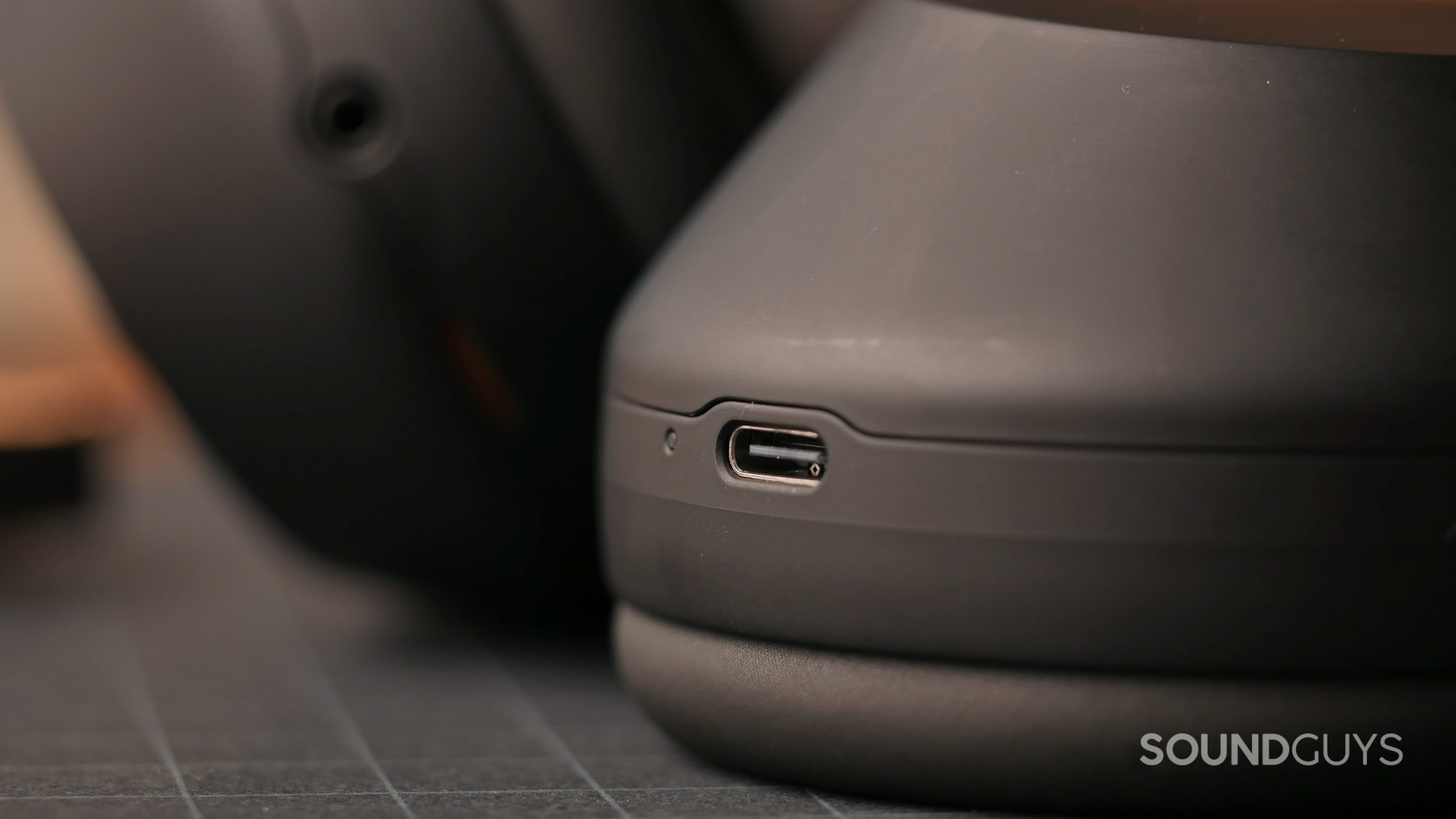
The Bose Noise Cancelling Headphones 700 lags behind Sony’s flagship offering when it comes to Bluetooth codec support. Onboard the Bose NCH 700 you only get AAC and SBC. That’s fine for Apple users, but some Android devices get left out. However, Sony also offers LDAC, which gives the WH-1000XM5 a leg up. The Sony WH-1000XM5 uses the newer Bluetooth 5.2 specification while the Bose NCH 700 uses Bluetooth 5.0. Both give you solid connections to devices. With Bluetooth 5.2 you’ll have access to LE Audio and the LC3 codec once it rolls out (whenever that happens), something that Bluetooth 5.0 devices will miss out on.
Both headphones let you use Bluetooth multipoint, too. Wired listening is available for both as well, but Bose uses a 2.5mm-to-3.5mm cable while Sony sticks to 3.5mm on both ends. That makes it a bit easier to track down replacement cables for the Sony headset, just in case you happen to lose yours.
Unique to the Bose Noise Cancelling Headphones 700 is the option to add a Bose USB Link module ($70 at Amazon). These connect the headphones if you want to ensure everything syncs automatically when you turn your computer (macOS and Windows) on with an even more stable connection. It’ll set you back around $70 on top of what you paid for the headphones. Still, if you make conference calls all day, it might be beneficial, plus the integration with Microsoft Teams could come in handy if the rest of your office uses that program as well. Sony doesn’t offer anything comparable.
Is the Bose Music App or the Sony Headphones Connect App better?
The mobile experience for the Sony WH-1000XM5 depends on the Sony Headphones Connect app (iOS/Android) and for the Bose Noise Cancelling Headphones 700, it’s the Bose Music app (iOS/Android). Both apps offer broadly the same features, including an EQ, firmware updates, and altering the level of ANC. And, unfortunately, both apps ask for lots of personal information. But it’s where these apps diverge that’s important.
Overall, the Sony Headphones Connect App gives you more in return for all that personal information than the Bose Music App.
The Bose Noise Cancelling Headphones 700 do not support any sort of spatial audio, while the Sony WH-1000XM5 has 360 Reality Audio optimization when you install the app and use a compatible streaming service. And on the subject of sound, Sony’s cans boast a slightly more detailed in-app EQ than Bose’s model. Plus, likely as competitive positioning against Apple, the Sony model has a feature to help you locate a misplaced headset.
Which has a better battery life, the Sony WH-1000XM5 or Bose Noise Cancelling Headphones 700?
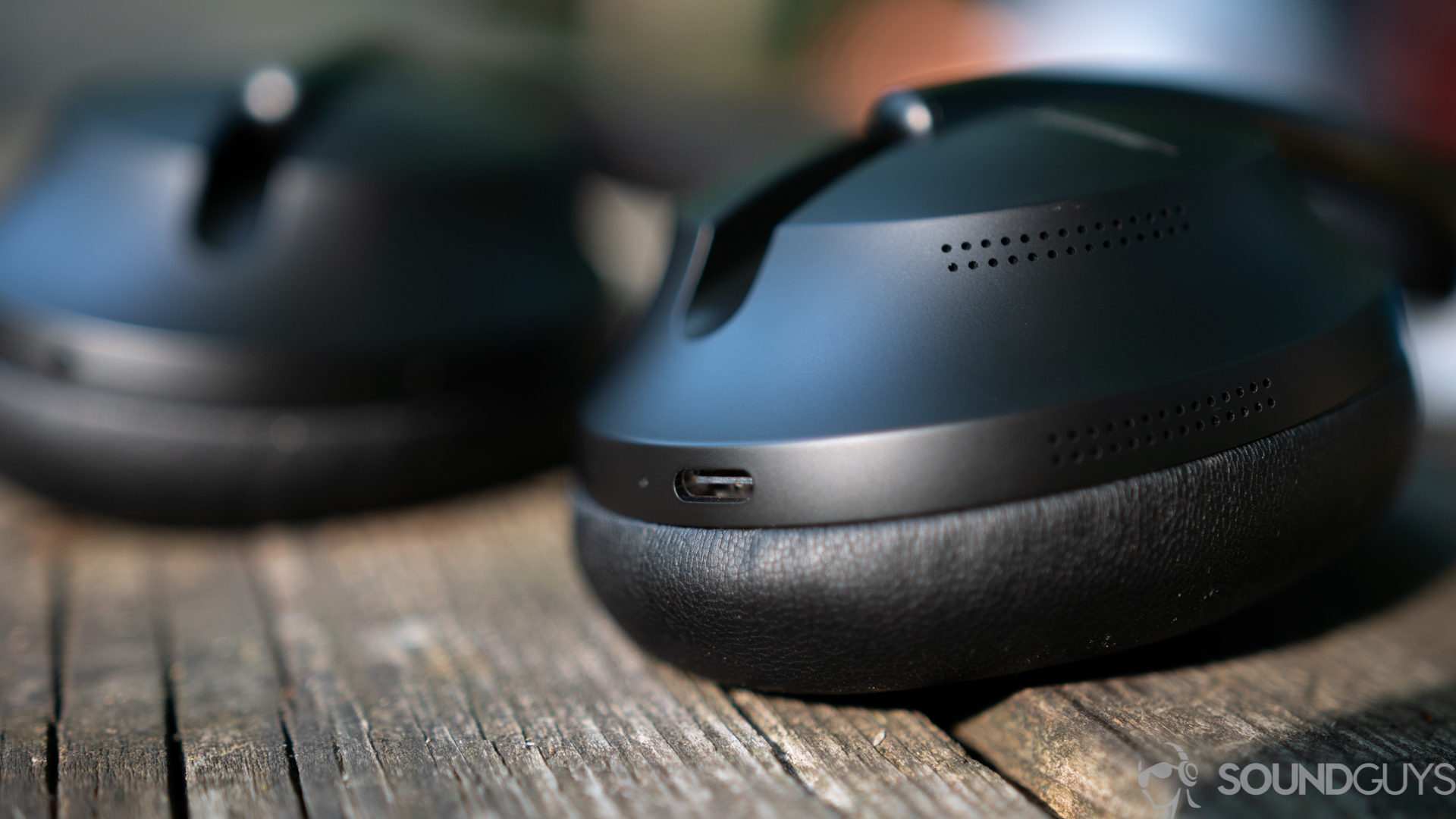
Our standard battery test got 31 hours, and 53 minutes of usage from the WH-1000XM5 with the constant playback of real music, peaking at 75dB(SPL). Your mileage may vary depending on how loudly you listen to your music. That means the XM5 beat its official claimed 30-hour battery life. When we subjected the Bose Noise Canceling 700 to the same test, we recorded 21 hours, 25 minutes of playback. That beats out Bose’s own claim of 20 hours, but it is less than Sony’s claim. Both models use USB-C for charging, as you’d expect from most modern headphones.
While you can extend the Sony WH-1000XM5 battery by disabling ANC mode, the Bose NCH 700 has no such function. In other words, the WH-1000XM5 has a better battery life that you can make even longer by playing music on a standard listening mode that’s unavailable on the Bose.
The Bose cans can get up to three and a half hours of use with a 15-minute charge, which isn’t bad. However, the Sony headset reaches 180 minutes of listening time with just three minutes on a cable.
The Sony WH-1000XM5 bests the Bose Noise Cancelling Headphones 700 in noise canceling performance
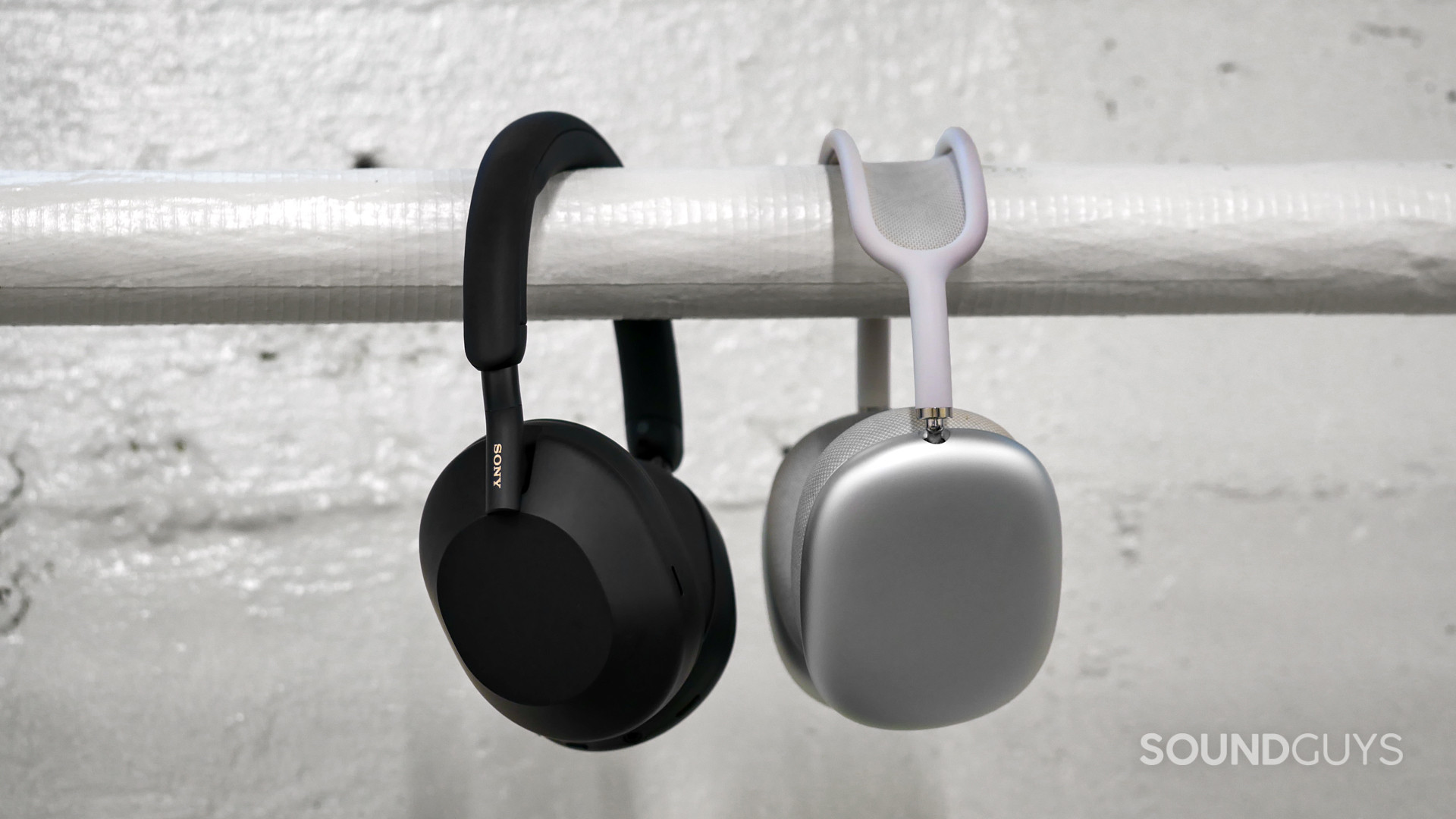
Bose was once the go-to name in noise canceling, but ever since Sony introduced its Sony WH-1000X line, it has made serious advances into that territory. That remains true with the Sony WH-1000XM5. This iteration brings even more passive isolation, which is great for keeping out unwanted noise. While the ANC has improved over the previous XM4, it’s really the isolation that sees improvement here. When coupled with Sony’s very capable ANC technology the increased isolation really does wonders.
The Noise Cancelling Headphones 700 still does a good job and holds its own, but Bose definitely has some catching up to do. That’s not out of the question, as Bose does release firmware updates to improve its products’ performance. Still, the padding and passive isolation of the Bose Noise Cancelling Headphones 700 won’t change unless the hardware itself changes.
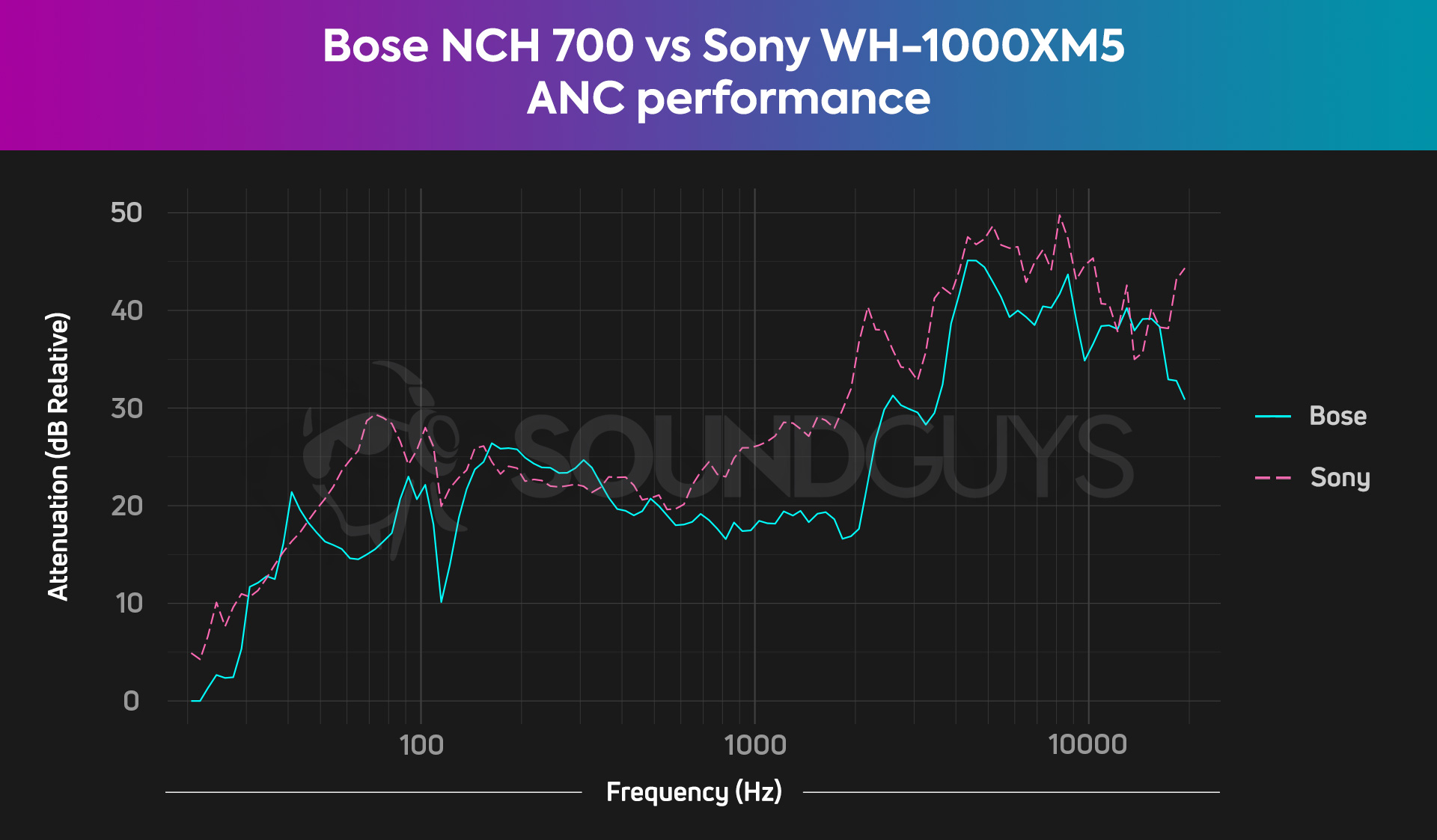
As you can see from the chart above, the Sony WH-1000XM5 saw a bump in passive isolation that beats out the Bose Noise Cancelling Headphones 700 in the mids and into the highs. While both models deliver impressive ANC, Sony’s headset does ANC better overall.
Interestingly, the Bose Noise Cancelling Headphones 700 utilizes different amounts of ANC levels to suit your comfort, however, your options are ultimately ANC on or Transparency mode on.
Do the Sony WH-1000XM5 or Bose Noise Cancelling Headphones 700 sound better?
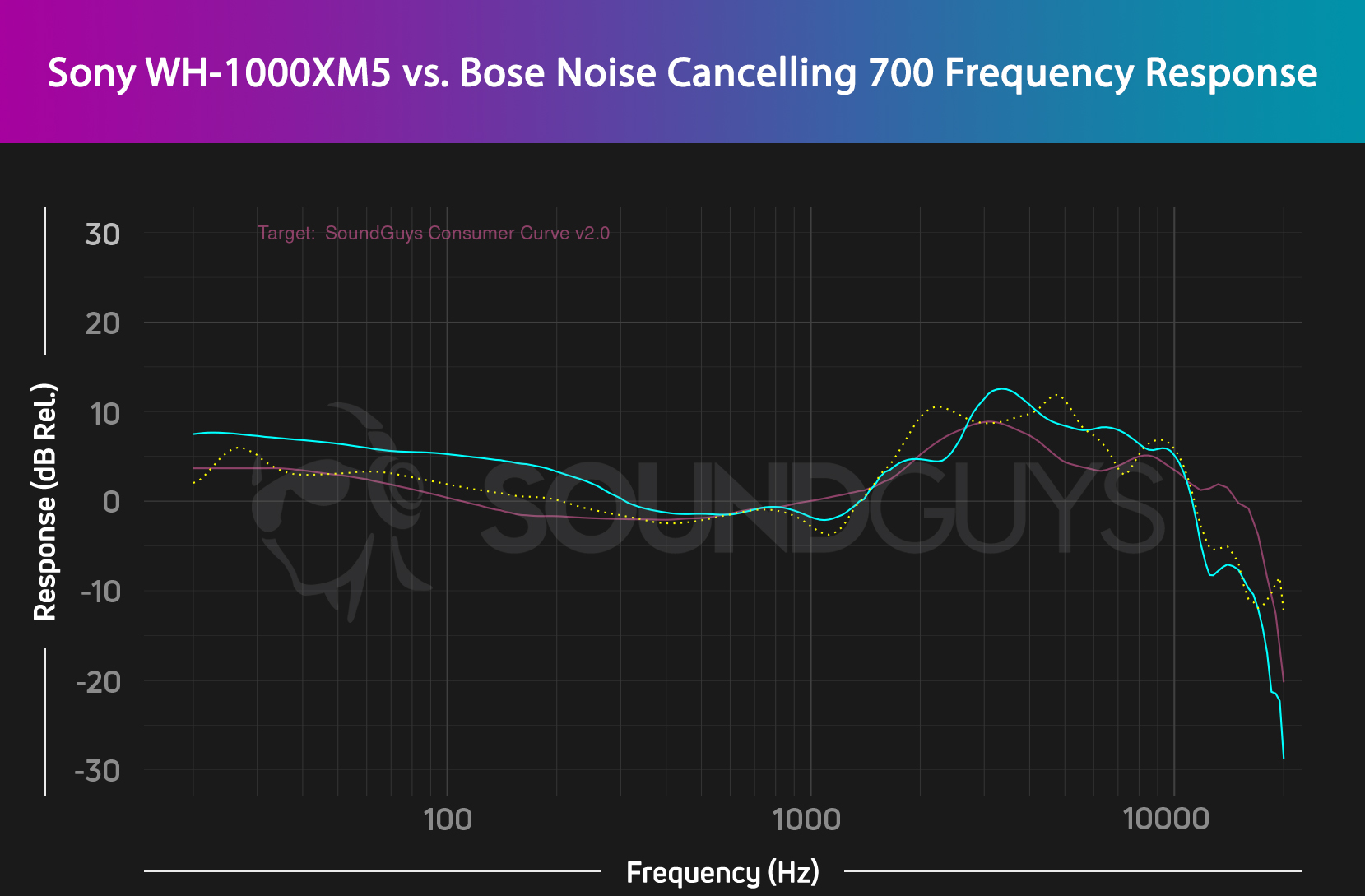
Out of the box, both these headsets hew fairly close to our ideal curve for consumer headsets but sound noticeably different. As our frequency response chart above shows, the WH-1000XM5 boosts bass notes below 300Hz by around 5dB more than the Bose Noise Canceling 700, meaning that low-frequency content gets more prominence on the Sony headphones.
While neither model will likely sound bad to most people’s ears, the amount of bass is likely to be the deciding factor, since the midrange and treble responses are actually quite similar between the two headsets. Of course, if either response curve isn’t to your liking, you can EQ both models using the respective app, and as we covered above, the Sony headphones boast a slight advantage there.
Does the Bose NCH 700 have a better mic than the WH-1000XM5?
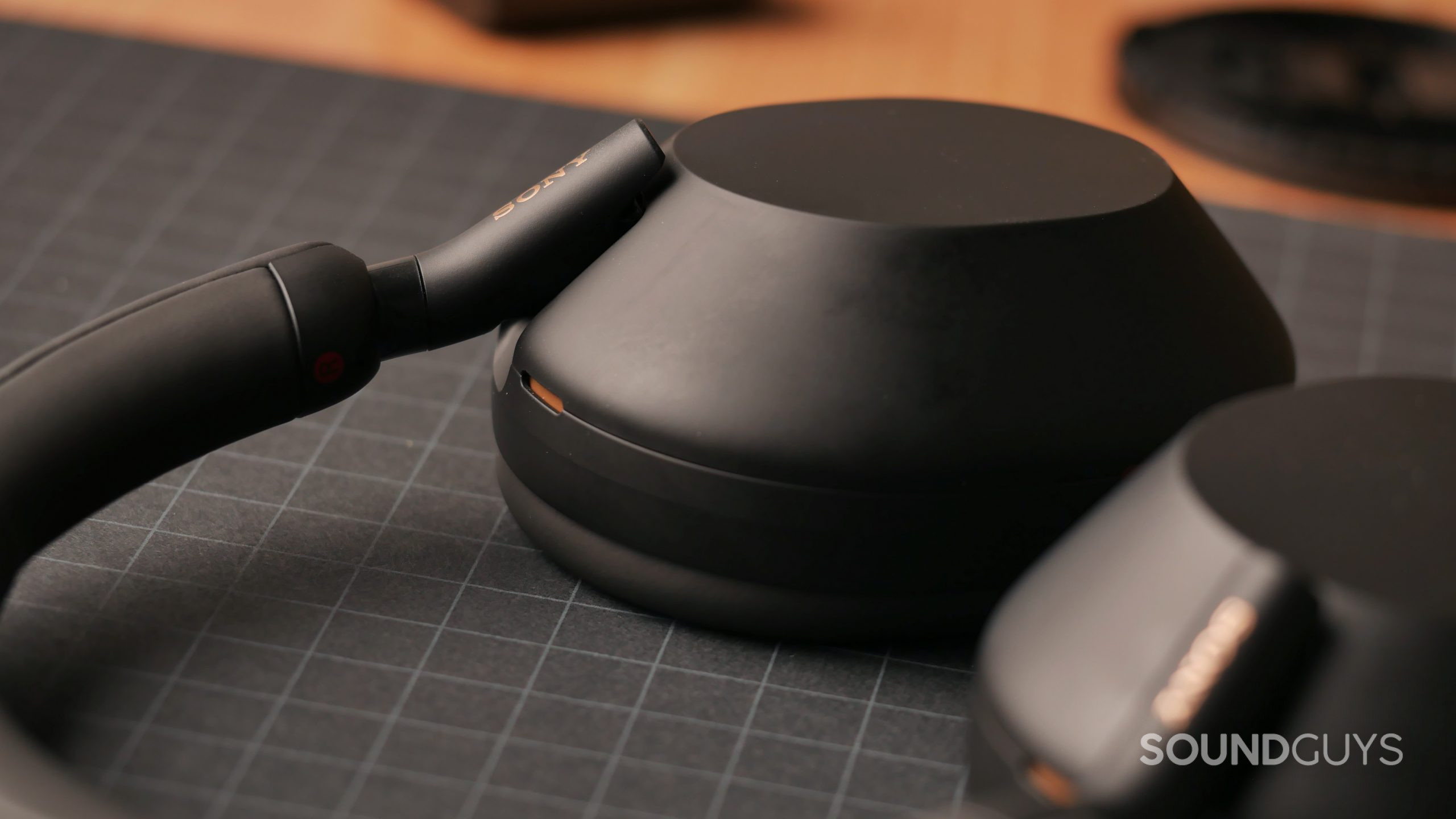
Suffice to say the Sony WH-1000XM5 has an excellent microphone for a set of consumer headphones. It won’t sound like a professional condenser mic or anything, but you’ll likely notice how good conference calls are and so will your listeners. The Bose Noise Cancelling Headphones 700 still holds its own, too, however.
If you want to hear for yourself, take listen and tell us what you think with the poll at the end.
Sony WH-1000XM5 mic demo (Ideal):
Bose Noise Cancelling Headphones 700 mic demo (Ideal):
In a windy environment, for example, the Sony headset transmits voices clearly with no noticeable noise. In comparison, there is slightly noticeable background noise through the Bose Noise Cancelling Headphones 700, though again it isn’t awful by any means.
Sony WH-1000XM5 mic demo (Wind):
Bose NCH 700 mic demo (Wind):
Office sounds like keyboard clacks get noticeably attenuated through the WH-1000XM5 and while they’re still audible, none get loud enough to drown out voices. These sorts of noises are also made quieter by the Bose headphones, but not as much.
Sony WH-1000XM5 mic demo (Office):
Bose NCH 700 mic demo (Office):
Which microphone sounds better to you?
Should you buy the Sony WH-1000XM5 or Bose Noise Cancelling Headphones 700?
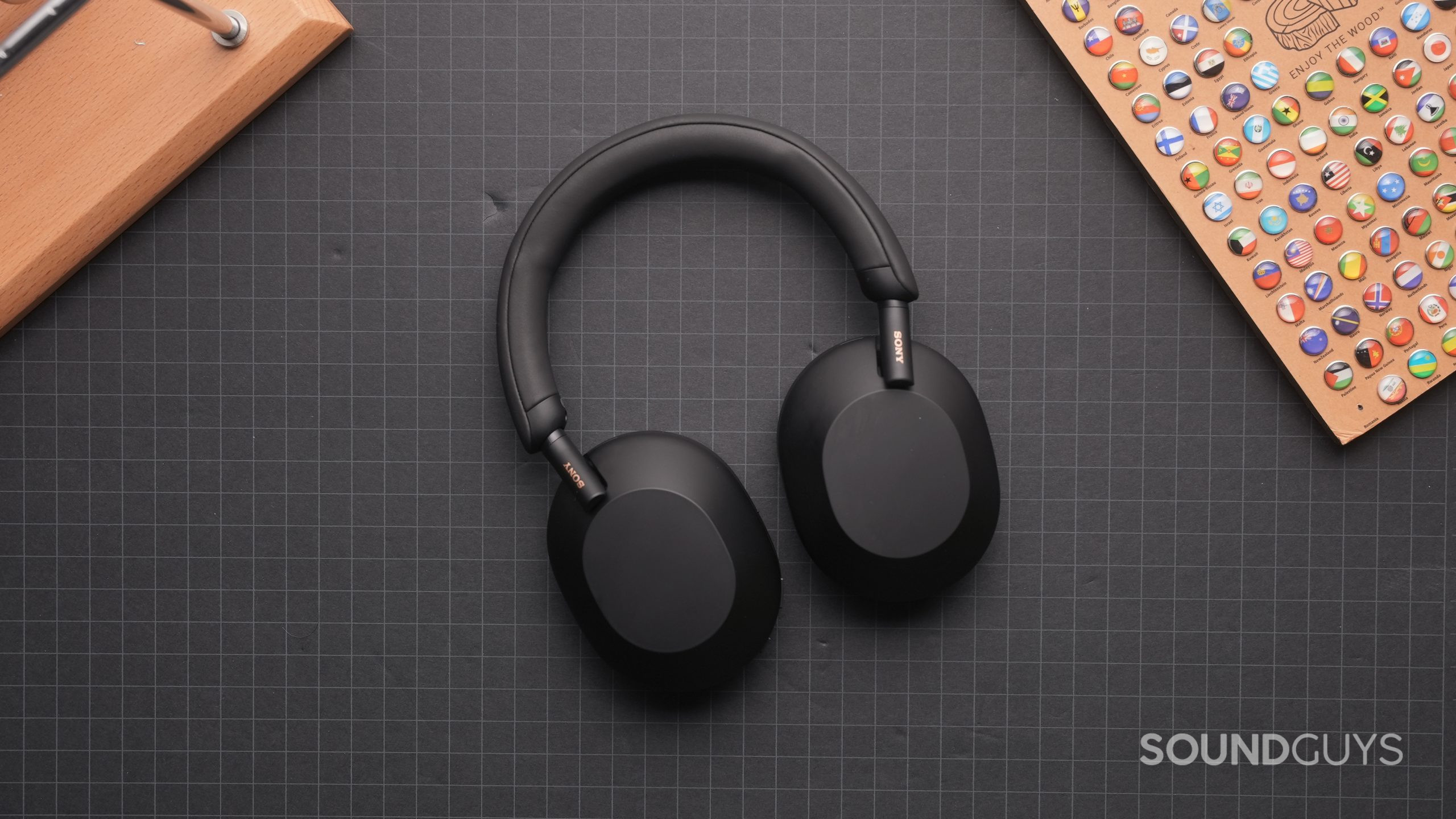
When it comes down to it, we recommend the Sony WH-1000XM5 over the Bose Noise Cancelling Headphones 700. The NCH 700 isn’t bad by any means, it’s just that Sony’s headset boasts many small refinements and features that make it an incredibly versatile headset. It offers better isolation, convenience options like wearing detection, and a more useful mobile app. Whether you use them for work, enjoying tunes, commuting, or all of the above, you’ll likely appreciate this pair of headphones.

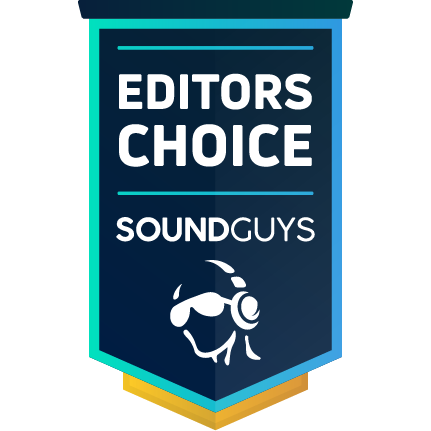
The Bose Noise Cancelling Headphones 700 is often sold for a bit cheaper, however. That might be enough to edge it in your direction if you’re looking to save a few bucks. You’ll get a solid pair of ANC headphones for the price, and if you won’t miss spatial audio and wearing detection, that’s not a bad deal at all.


What should you buy instead of the Sony WH-1000XM5 or Bose Noise Cancelling Headphones 700?
We’re at the tip of the ANC headphones pyramid here. If you want something close, however, try the older sibling of the Sony WH-1000XM5, the WH-1000XM4. Because the newer model is out, the predecessor’s price dropped to $348 at Amazon. You get many of the same features with the older headset, but a slightly less flashy design and a bit less stellar mic. These are our overall pick for best Bluetooth headphones under $400 USD for a reason, after all.
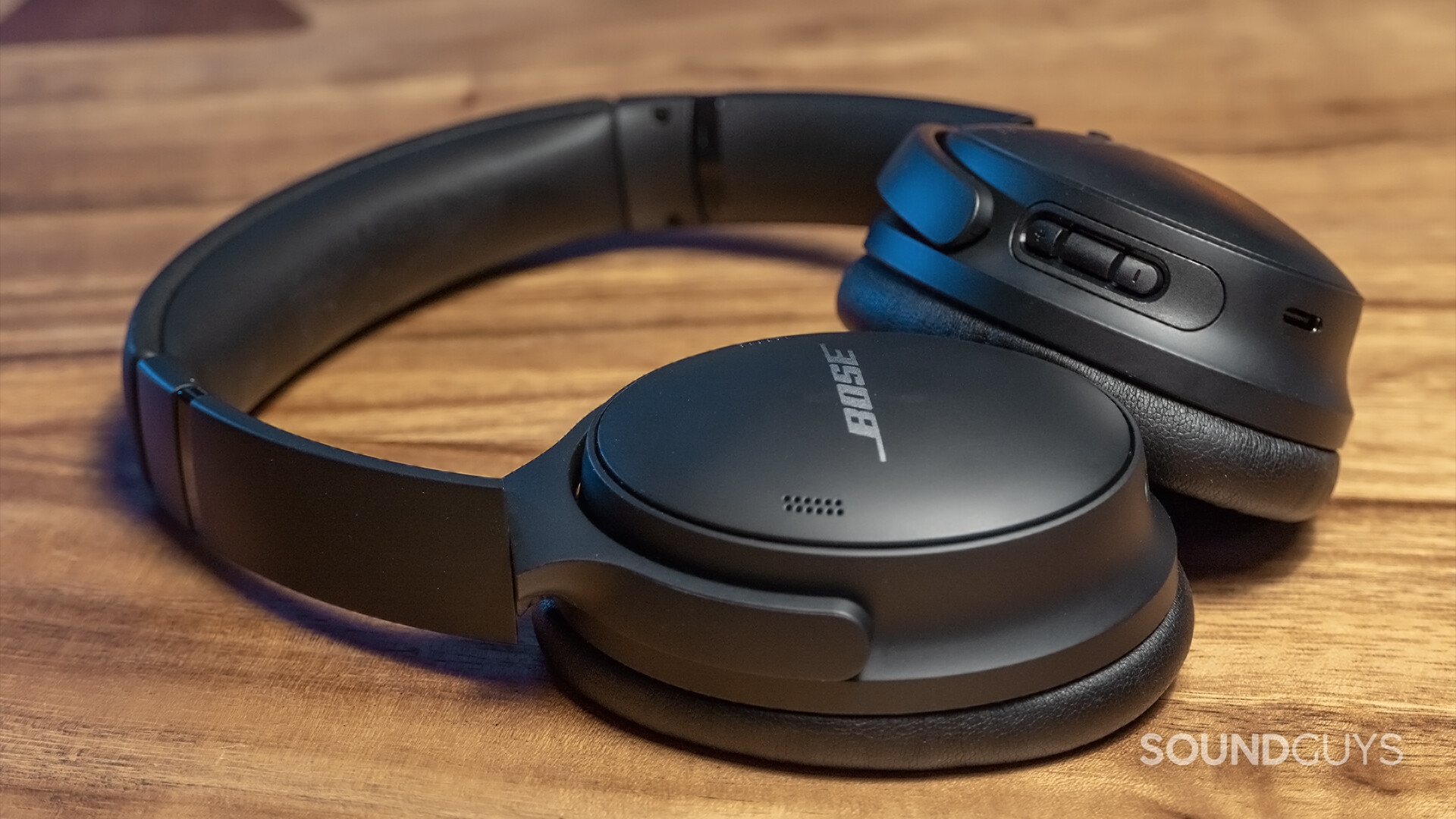
At the same time, Bose offers the QuietComfort 45. It gives you pretty rock solid ANC and lives up to the “comfort” part of its name for sure. Alas, Bose only offers AAC and SBC on these cans, too. But, if you have the latest firmware installed, the Bose Music App provides access to a — rather basic — equalizer. It makes for a good option at a lower price ($279 at Amazon).
Finally, in the arena of premium headphones, you should look at the well priced ($289.23 at Amazon) Sennheiser MOMENTUM 4 Wireless. It sells for less than the Sony WH-1000XM5, and while the ANC is not quite as good, it’s still one of the better performers. Sennheiser tunes the MOMENTUM 4 Wireless with a very pleasing frequency response and supplies a bevy of high quality Bluetooth codecs: aptX, aptX Adaptive, plus AAC and SBC.
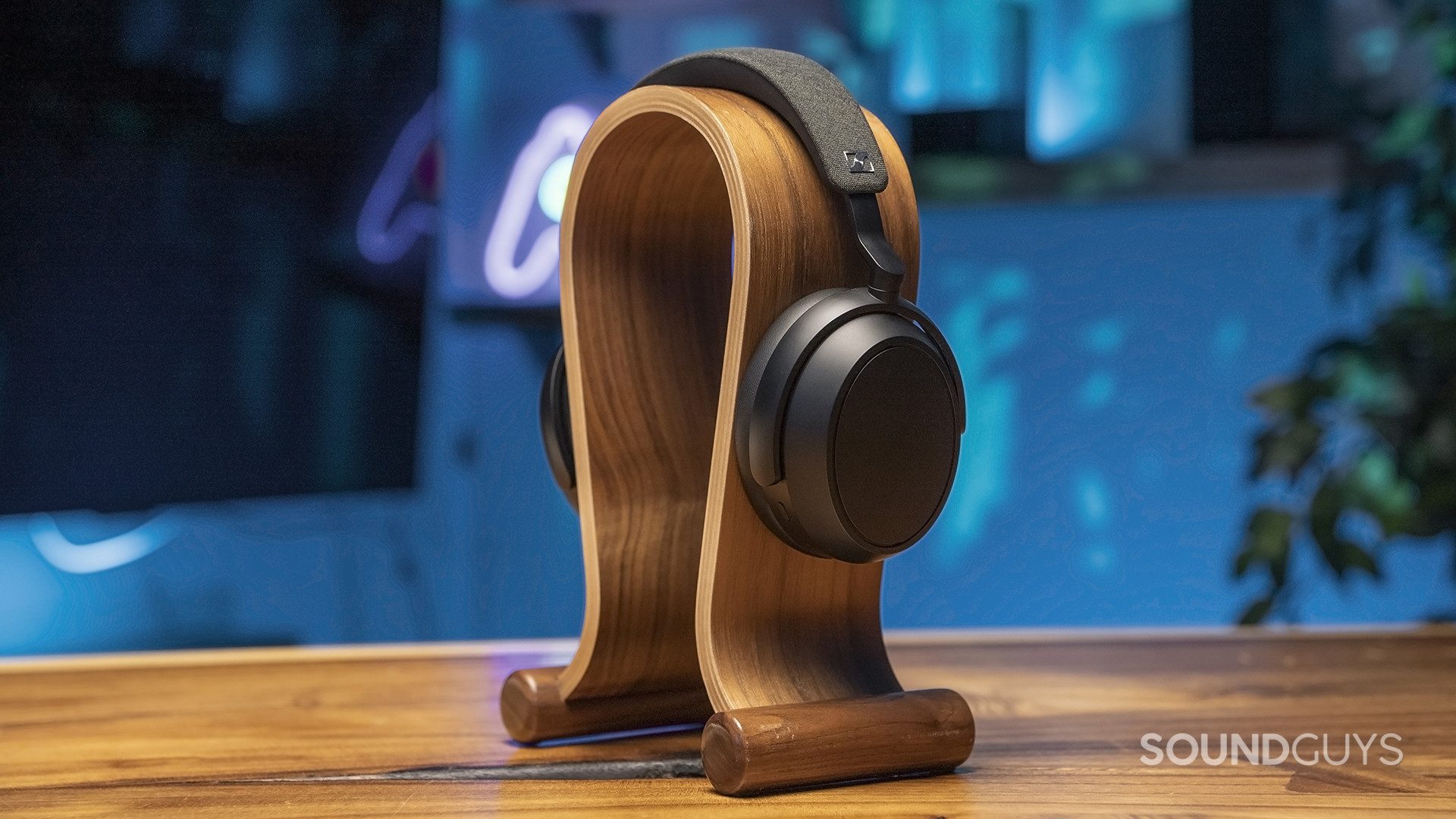
For even less money, you can get the Monoprice BT-600ANC. It has some pretty great ANC and supports the aptX Bluetooth codec. Plus, it retails for $84.99 at Amazon, which is far less than the options mentioned above.
If you want something smaller, the Sony WF-1000XM4 true wireless earbuds ($278 at Amazon) might be more your speed. These earphones have great ANC in a tiny package, but like all earbuds, they don’t have a very long battery life. They offer the same Bluetooth codec options and 360 Reality Audio support as their over-ear cousin, too.
Frequently asked questions about Sony WH-1000XM5 and Bose Noise Cancelling Headphones 700
Both the Sony WH-1000XM5 and Bose Noise Cancelling Headphones 700 are great mates for working at a computer. If you use the mic a lot, the WH-1000XM5 attenuate office noises a bit better, although the Bose headphones are by no means bad. If you use Microsoft Teams, investing an extra $70 in the Bose Link USB module guarantees an even more stable connection to your computer and seamless MS Teams integration.
Both of these headsets are rather large and bulky for working out — whether you’re doing cardio or strength training. neither have any waterproofing either. Still, for this use case, there are better options out there.